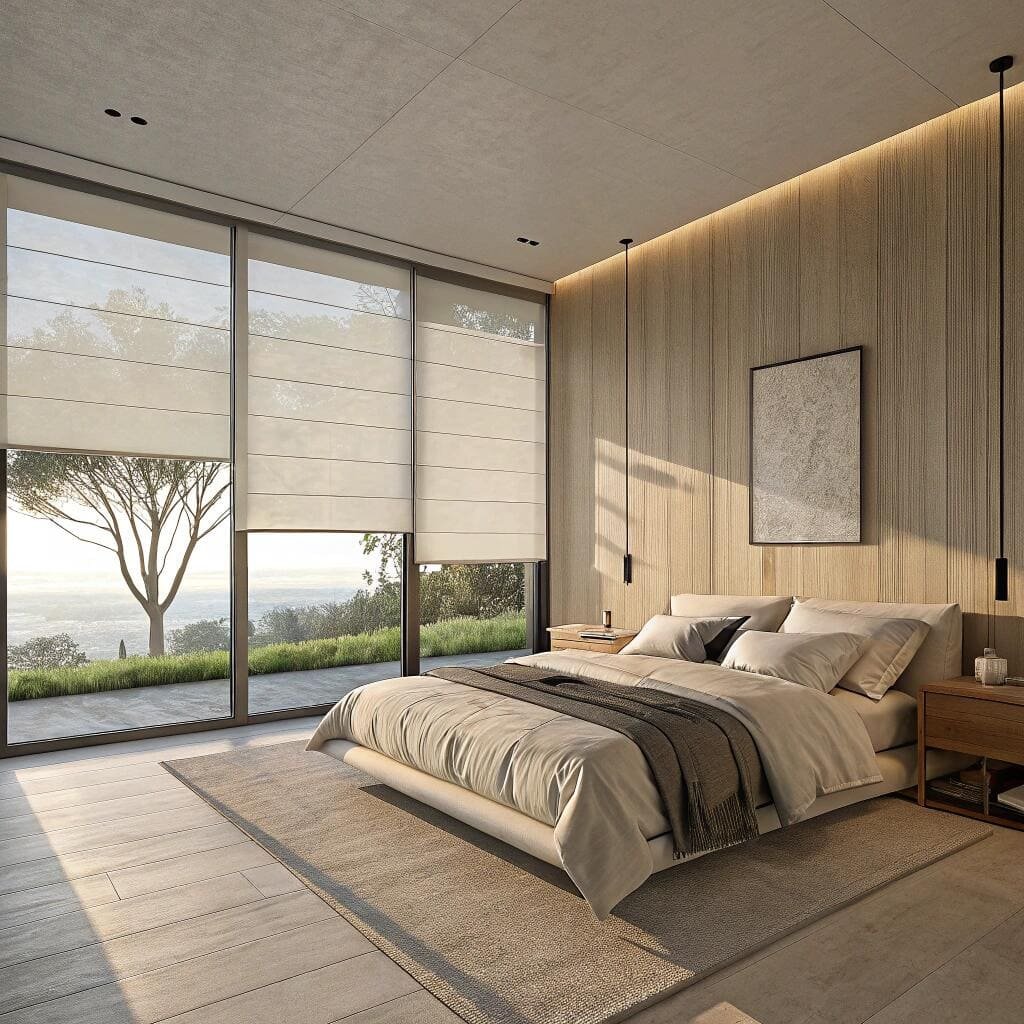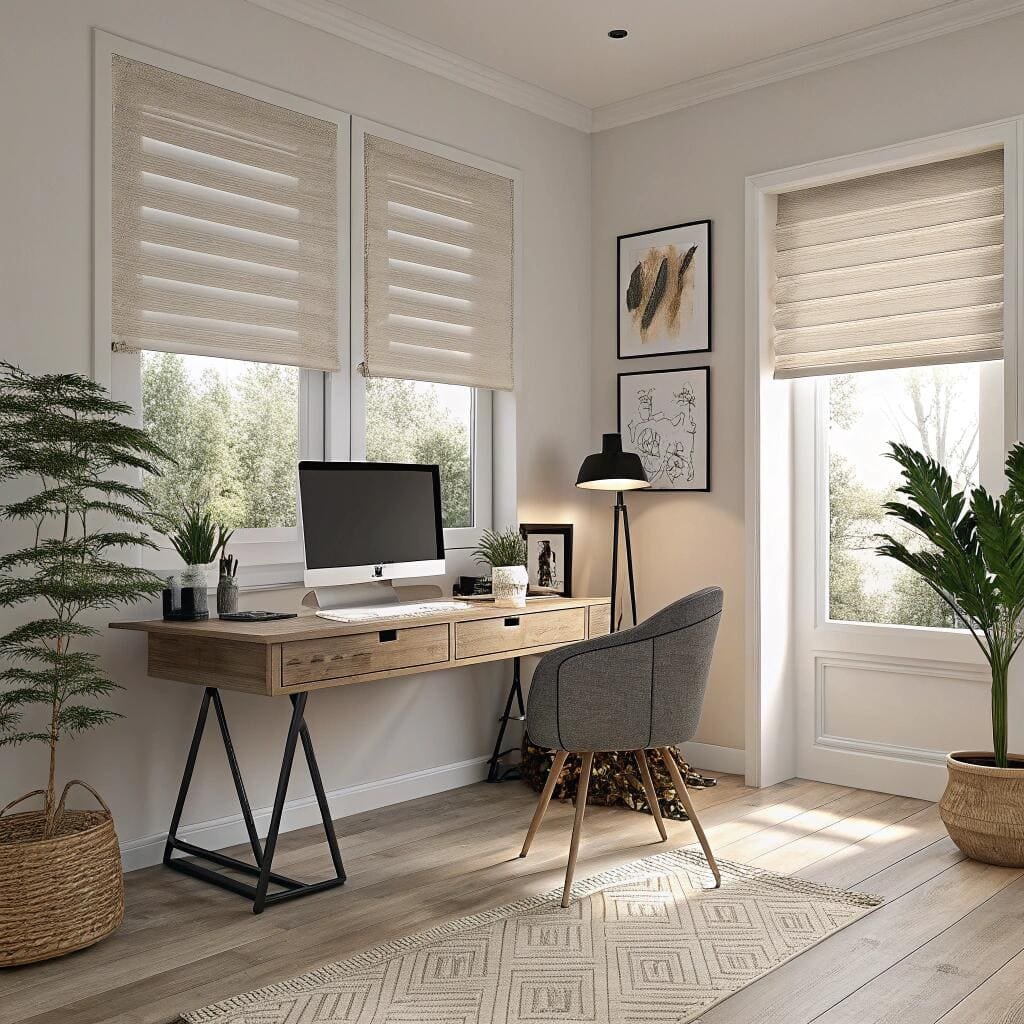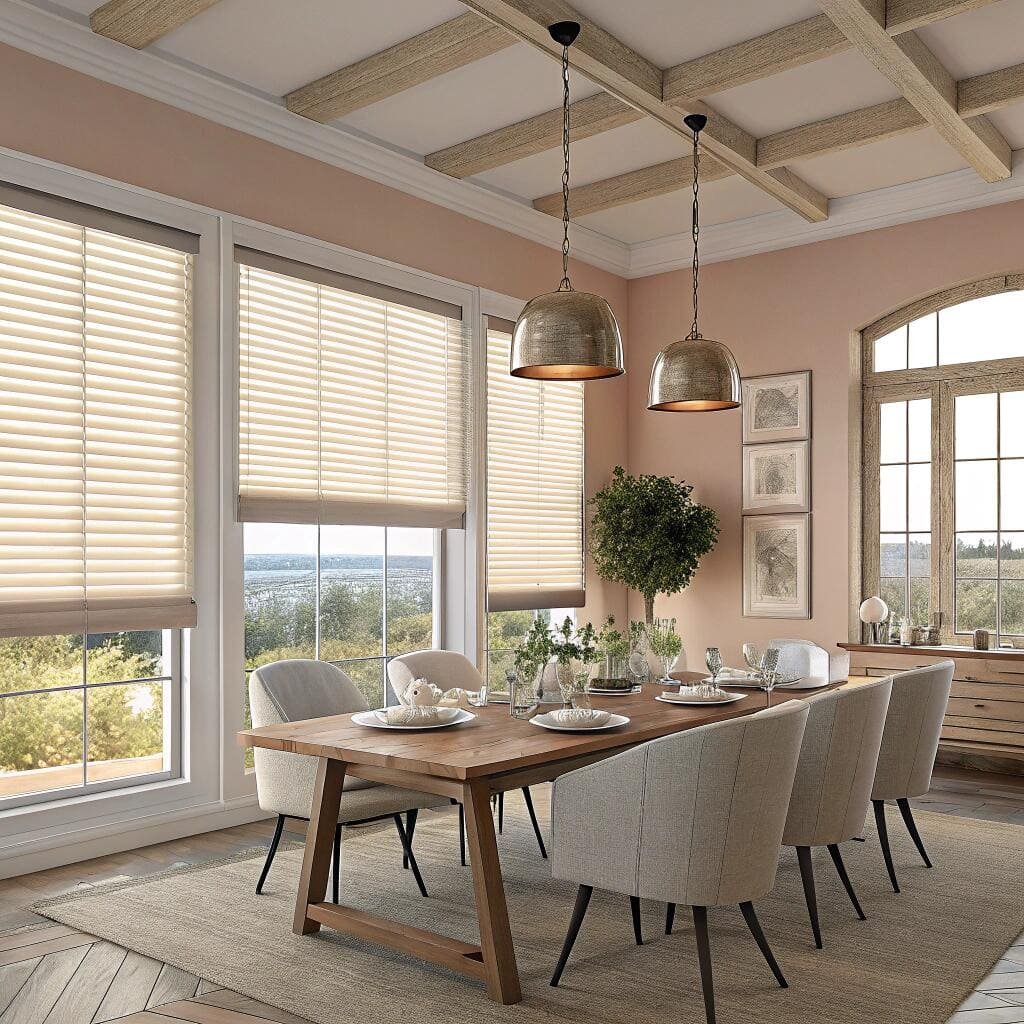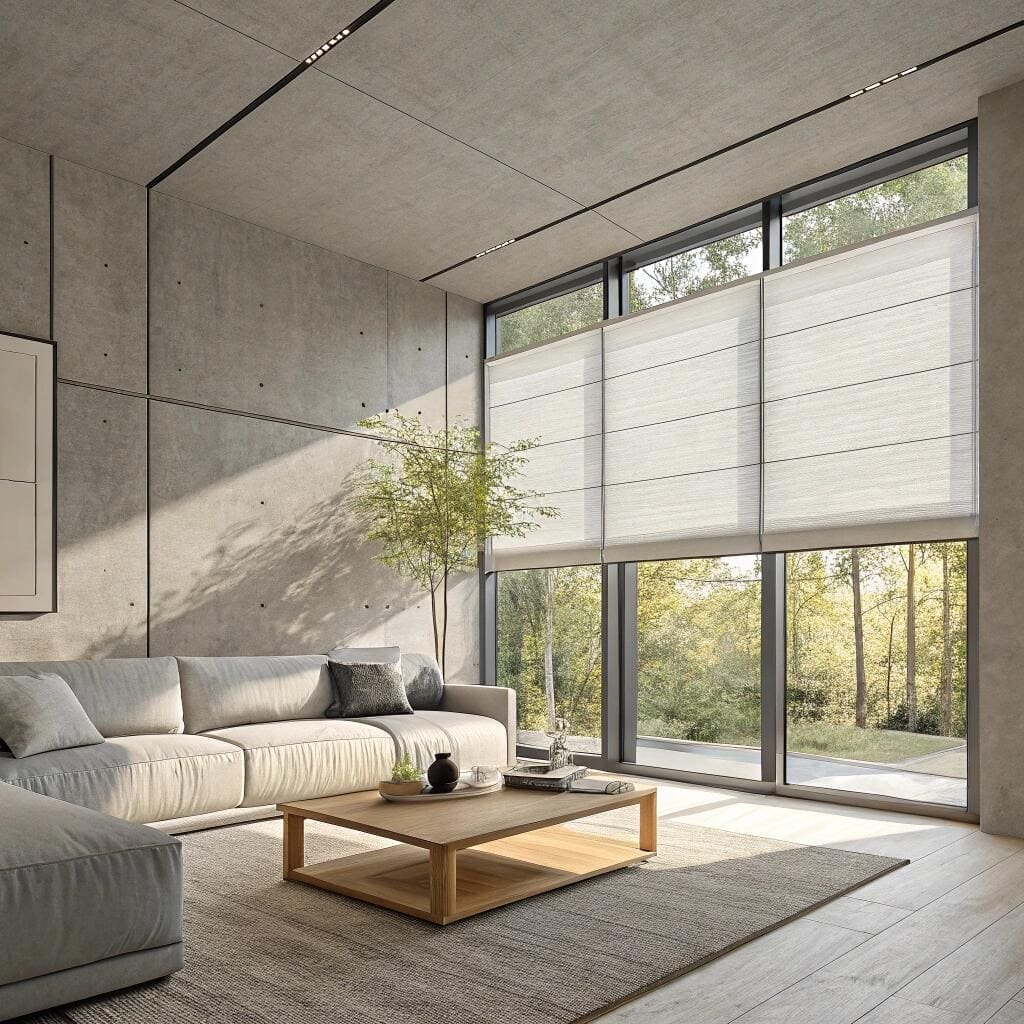Motorized blinds promise convenience but battery concerns create project delays. Professional buyers worry about maintenance schedules, replacement costs, and system reliability throughout multi-year commercial installations.
Modern motorized blinds with quality lithium batteries typically last 6 months to 5 years depending on usage frequency, shade size, and battery type. Built-in rechargeable systems average 6-12 months between charges, while premium lithium AA battery wands can operate 3-5 years with normal use.

Understanding battery performance[^1] helps you plan maintenance schedules, budget for replacements, and set realistic client expectations. I work with project managers who need reliable timelines for large installations.
How long do batteries last in motorized blinds?
Dead batteries during client presentations create embarrassing situations. Project timelines depend on predictable performance. Battery longevity varies dramatically based on system design and usage patterns.
Battery life ranges from 6 months for built-in rechargeable systems to 5 years for premium lithium disposable batteries. Usage frequency, shade weight, and motor efficiency significantly impact actual performance in real-world installations.

Battery performance depends on multiple technical and environmental factors that directly impact project budgets and maintenance schedules[^2]. Built-in rechargeable batteries represent the most common modern solution, typically lasting 6-12 months between charges with normal operation patterns of 1-2 cycles daily. These systems integrate seamlessly into shade headrails with USB charging ports accessible for maintenance. External battery wands using lithium AA batteries offer superior longevity, often reaching 3-5 years with quality batteries and moderate usage patterns.
The key performance variables include shade size and weight, with larger installations requiring more power to operate effectively. Heavy blackout fabrics or oversized windows can reduce battery life by 20-30% compared to lightweight materials. Motor efficiency plays a crucial role, with premium brands like Somfy and Lutron designing energy-optimized systems that extend operational periods significantly. Environmental conditions also matter – extreme temperatures can reduce battery performance, while consistent indoor conditions maximize lifespan.
Usage frequency creates the most dramatic impact on battery longevity. Shades operated multiple times daily will drain batteries faster than those on automated schedules. Smart home integration can increase operation frequency as sensors trigger automatic adjustments. Understanding these factors helps project managers set realistic maintenance expectations and budget appropriately for ongoing operational costs throughout the warranty period.
How often do motorized blinds need to be recharged?
Surprise battery failures disrupt business operations and client satisfaction. Maintenance planning requires predictable charging schedules. Recharging frequency[^3] depends on battery type, usage patterns, and system design.
Built-in rechargeable systems typically need charging every 6-12 months, while external rechargeable battery wands may require attention every 8-18 months. Heavy usage or large shades may reduce these intervals by 30-50%.

Charging frequency planning requires understanding the relationship between battery technology, usage patterns, and operational demands across different project types. Built-in rechargeable systems offer the most predictable maintenance schedules, with lithium-ion batteries providing consistent performance throughout their charge cycles. These systems typically include low-battery indicators through LED lights or app notifications, allowing proactive maintenance before complete power loss occurs.
External rechargeable battery wands provide longer intervals between charging sessions due to their larger capacity and replaceable design. Project managers can maintain spare charged wands for immediate replacement during maintenance windows, minimizing operational disruption. The ability to swap batteries instantly makes this approach popular for commercial installations where downtime must be minimized.
Seasonal variations affect charging requirements as extreme temperatures can reduce battery efficiency. Summer heat or winter cold may require more frequent attention, particularly for shades exposed to direct sunlight or temperature fluctuations. Automated scheduling systems can optimize battery usage by reducing unnecessary movements during peak temperature periods.
Environmental factors within buildings also impact charging frequency. High-traffic areas with frequent manual adjustments will require more attention than automated zones operating on fixed schedules. Smart home integration may increase or decrease charging needs depending on sensor sensitivity and automation logic. Understanding these variables helps establish realistic maintenance contracts and client expectations for ongoing operational support throughout project lifecycles.
How do you maintain motorised blinds?
Poor maintenance leads to premature failures and warranty claims. Systematic care extends battery life and prevents expensive service calls. Proper maintenance protocols protect your investment and ensure reliable operation.
Regular maintenance includes monthly cleaning, quarterly battery checks, semi-annual calibration, and annual professional inspection. Preventive care extends battery life by 40-60% while reducing emergency service calls and warranty claims.

Systematic maintenance protocols ensure maximum battery performance and operational reliability throughout the product lifecycle. Monthly cleaning routines prevent dust accumulation that can strain motors and drain batteries unnecessarily. Using microfiber cloths and avoiding harsh chemicals protects both fabric integrity and electronic components. Regular inspection of charging ports prevents corrosion and ensures reliable connections during maintenance cycles.
Quarterly battery status checks through manufacturer apps or indicator lights help identify declining performance before complete failure occurs. This proactive approach allows scheduled maintenance during convenient times rather than emergency service calls during critical operations. Documenting battery performance trends helps predict replacement needs and budget for future maintenance requirements.
Semi-annual calibration ensures motors operate efficiently without unnecessary strain that reduces battery life. Limit adjustments prevent over-travel that wastes power and potentially damages mechanical components. Professional calibration services verify proper operation and identify potential issues before they become expensive problems requiring complete system replacement.
Annual professional inspections provide comprehensive system evaluation including motor performance, battery condition, and control system functionality. Qualified technicians can identify wear patterns, update firmware, and recommend upgrades that improve efficiency and extend operational life. This investment in professional maintenance typically pays for itself through extended equipment life and reduced emergency service requirements.
Environmental considerations include protecting systems from extreme temperatures, moisture, and direct sunlight exposure that can degrade battery performance. Proper installation with adequate ventilation and protection from weather elements ensures optimal operating conditions. Regular inspection of mounting hardware and electrical connections prevents problems that could damage expensive electronic components and void manufacturer warranties.
What are the disadvantages of motorized blinds?
Motorized systems create new challenges alongside their benefits. Understanding limitations helps set realistic expectations and plan for potential issues. Complete dependency on power sources creates vulnerability during failures.
Key disadvantages include higher upfront costs (200-400% premium), power dependency, complex installation requirements, limited repair options during failures, and ongoing maintenance expenses that manual systems avoid.

Cost considerations extend beyond initial purchase prices to include installation complexity, ongoing maintenance, and potential repair expenses that manual systems never require. Professional installation typically adds 20-40% to project costs due to electrical requirements, programming needs, and integration complexity with existing building systems. These specialized skills limit contractor options and may extend project timelines in areas with limited technical expertise.
Power dependency creates operational vulnerability that manual systems never experience. Battery failures can render shades completely inoperable until professional service restores functionality. Emergency situations like power outages may prevent normal operation, though battery systems provide some protection. This dependency requires backup planning and maintenance protocols that add complexity to facility management procedures.
Technical complexity increases troubleshooting difficulty when problems occur. Motor failures, programming issues, or connectivity problems require specialized knowledge to diagnose and repair effectively. Limited availability of qualified service technicians in some regions can extend downtime and increase service costs significantly. Warranty coverage may require manufacturer-authorized service providers, limiting repair options and potentially increasing response times.
Integration challenges arise when connecting motorized systems with existing building automation or smart home platforms. Compatibility issues between different manufacturers’ systems can create operational limitations or require expensive interface equipment. Software updates or platform changes may affect functionality, requiring ongoing technical support throughout the system lifecycle.
Long-term viability concerns include parts availability, software support, and technology obsolescence that could affect systems after warranty periods expire. Manufacturer business changes or product discontinuation could impact future service availability. These factors require careful vendor selection and consideration of long-term support capabilities when specifying motorized systems for critical applications.
How to extend battery life in motorized blinds?
Smart usage patterns dramatically improve battery performance and reduce maintenance costs. Optimization strategies help maximize investment value while minimizing operational disruption. Small changes create significant improvements in system longevity.
Optimize battery life through quality lithium batteries, efficient scheduling, regular maintenance, minimal unnecessary adjustments, proper installation, and environmental protection. These strategies can extend operational periods by 50-100% compared to default usage patterns.

Battery optimization requires systematic approach combining technical upgrades, operational improvements, and maintenance protocols that work together to maximize performance. Premium lithium batteries provide superior longevity and temperature stability compared to alkaline alternatives, justifying their higher initial cost through extended operational periods and reduced replacement frequency. Professional installation ensures optimal motor efficiency and prevents mechanical strain that wastes battery power through unnecessary resistance or poor alignment.
Scheduling optimization reduces battery drain by consolidating operations into efficient patterns rather than random manual adjustments throughout the day. Automated programs can coordinate multiple shades simultaneously, reducing individual motor cycling while maintaining desired light control and privacy functions. Smart sensors can optimize operations based on actual conditions rather than fixed schedules, preventing unnecessary movements during cloudy conditions or unoccupied periods.
Environmental protection extends battery life by maintaining stable operating conditions that prevent stress on electronic components. Proper installation includes protection from direct sunlight exposure, temperature extremes, and moisture that can degrade battery performance over time. Regular inspection of mounting hardware ensures proper alignment that prevents motor strain and excessive power consumption during normal operations.
Usage pattern analysis helps identify opportunities for efficiency improvements without sacrificing functionality. Reducing unnecessary manual overrides, optimizing group operations, and eliminating conflicting automated programs can significantly reduce power consumption. Training end users on efficient operation practices helps maintain optimal performance throughout the system lifecycle while preserving warranty coverage through proper usage patterns.
Maintenance scheduling prevents performance degradation that increases power consumption over time. Regular cleaning, calibration, and inspection maintain peak efficiency that maximizes battery life between service intervals. Professional maintenance programs provide systematic care that extends equipment life while maintaining warranty coverage and ensuring reliable operation for critical applications.
Conclusion
Smart battery management transforms motorized blinds from maintenance headaches into reliable automated systems that enhance building performance and user satisfaction.
Get Your Battery-Optimized Motorized Blind Specifications
Ready to specify motorized blinds with maximum battery performance for your next project? Download our comprehensive technical specifications, battery comparison charts, and maintenance protocols designed specifically for professional installers and project managers.
Contact info@velablinds.com for detailed specifications, performance data, and customized solutions that meet your exact project requirements and timeline constraints.
Extended FAQ Section
How do I know when motorized blind batteries need replacement?
Most modern motorized blinds include low-battery indicators through LED lights, app notifications, or operational sluggishness that signals declining power levels. Built-in rechargeable systems typically display red lights when charging is needed, while app-connected systems send smartphone alerts before complete power loss occurs. Physical symptoms include slower operation, incomplete cycles, or intermittent response to commands.
Professional monitoring through building management systems can track battery performance across multiple zones simultaneously, allowing predictive maintenance scheduling. Voltage monitoring capabilities in premium systems provide precise remaining capacity data for accurate replacement planning. Establishing baseline performance metrics during initial installation helps identify declining performance trends before emergency situations develop.
Preventive replacement schedules based on manufacturer recommendations and actual usage patterns help avoid unexpected failures during critical operations. Documentation of battery performance over time helps optimize replacement intervals for specific installations and usage patterns, reducing long-term maintenance costs while ensuring reliable operation.
Can motorized blinds work during power outages?
Battery-powered motorized blinds continue operating normally during power outages until battery reserves are depleted, providing significant advantage over hardwired systems that become completely inoperable. Built-in rechargeable systems typically maintain 6-12 months of normal operation capacity, while external battery wands can provide 1-5 years of service depending on battery quality and usage patterns.
Emergency operation capabilities vary by manufacturer and system design. Some systems include manual override mechanisms that allow limited operation without power, though these features may require special tools or procedures. Premium systems may include backup battery options or integration with building emergency power systems for critical applications requiring continuous operation during extended outages.
Planning for power outage scenarios requires understanding system capabilities and developing appropriate contingency procedures. Battery-powered systems provide significant resilience compared to hardwired alternatives, making them preferred choices for applications where continuous operation is essential. Emergency response planning should include battery status verification and backup power options for extended outage situations.
What’s the real cost difference between battery and hardwired motorized blinds?
Initial cost differences between battery and hardwired systems extend beyond equipment prices to include installation complexity, infrastructure requirements, and long-term operational expenses. Battery systems typically cost 15-30% more for equipment but eliminate electrical installation requirements that can add $200-500 per window for hardwired systems requiring new circuits or complex wiring runs through finished walls.
Long-term operational costs include battery replacement expenses averaging $50-150 per shade every 2-5 years, compared to minimal electricity costs for hardwired systems. However, hardwired systems require professional electrical service for repairs and may need costly infrastructure updates if building electrical systems change. Battery systems offer greater flexibility for future modifications or relocations without electrical work.
Total cost of ownership analysis over 10-15 year periods typically shows battery systems cost-competitive with hardwired alternatives when installation complexity and future flexibility value are considered. Professional installation cost savings often offset battery replacement expenses, particularly in retrofit applications where electrical access is limited or expensive to achieve through finished construction.
---
[^1]: Understanding battery performance is crucial for effective maintenance planning and ensuring reliable operation in motorized blinds.
[^2]: Exploring maintenance schedules helps project managers optimize operational efficiency and extend the lifespan of motorized blinds.
[^3]: Knowing the charging frequency is essential for preventing unexpected failures and ensuring smooth operation of motorized blinds.Partner with VelaBlinds for Your Next Project
Smart window treatments shouldn’t be complicated. After working with 500+ distributors and contractors worldwide, I’ve streamlined the process to get you quality products, competitive pricing, and reliable support – every time.
Why project professionals choose VelaBlinds:
- ✅ Fast, Accurate Quotes – Detailed specs and pricing within 24 hours
- ✅ Transparent Pricing – No hidden fees, volume discounts clearly outlined
- ✅ Quality Assurance – Direct partnerships with certified OEM manufacturers
- ✅ Project Support – Dedicated account manager from quote to delivery
Start your next project:
📧 Quick Quote: Send your requirements to info@velablinds.com
📱 Direct Contact: WhatsApp +86 137 2012 8317
🌐 Browse Solutions: https://velablinds.com/
📁 Product Resources: Access spec sheets, catalogs & project files
Jimmy Chen, Founder
"I built VelaBlinds to solve the real challenges I faced as a project buyer – long lead times, unclear specs, and unreliable suppliers. Let’s discuss how we can power your projects with smarter blinds."
Serving distributors and contractors across North America, Europe, and Australia since 2018.


